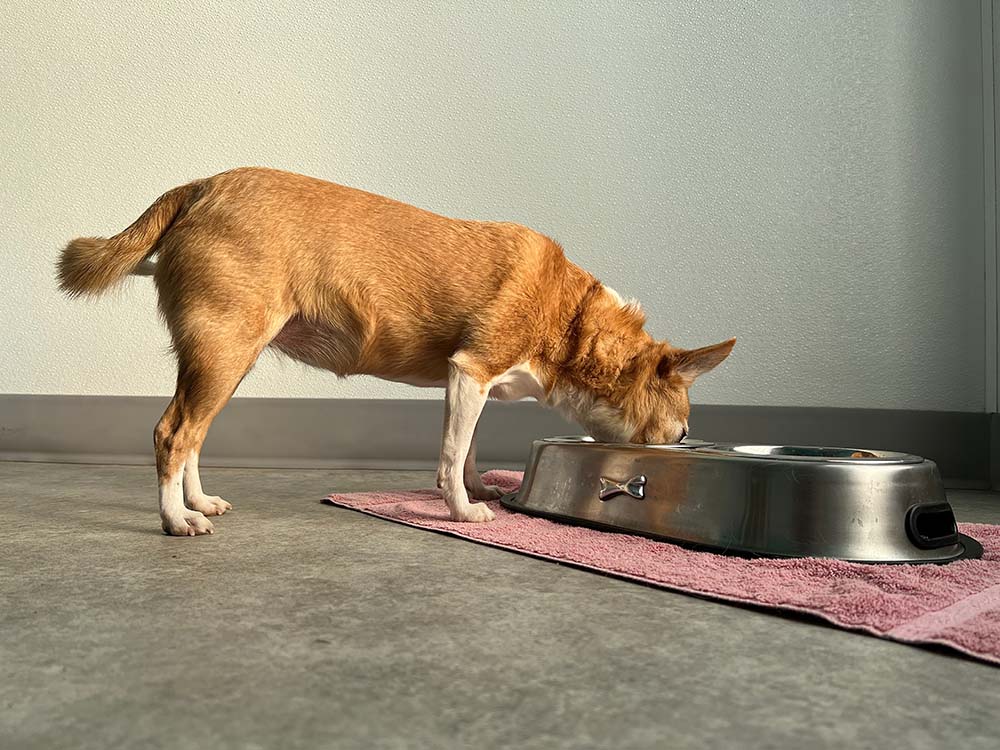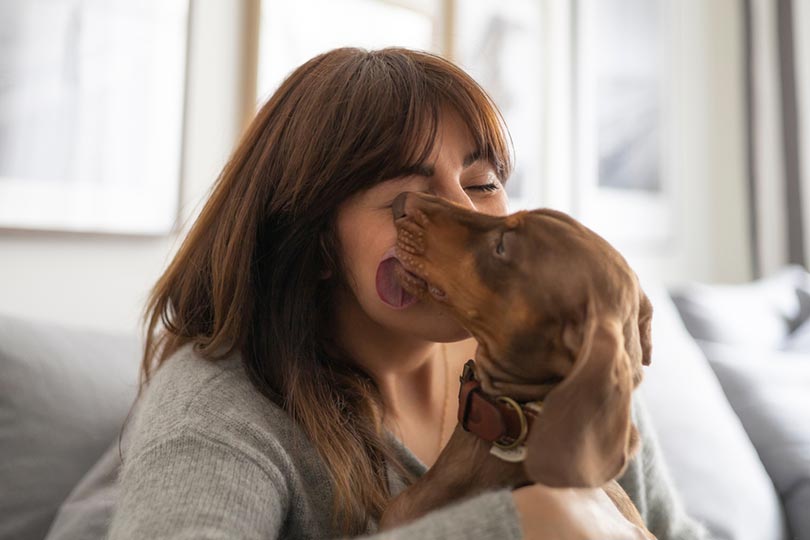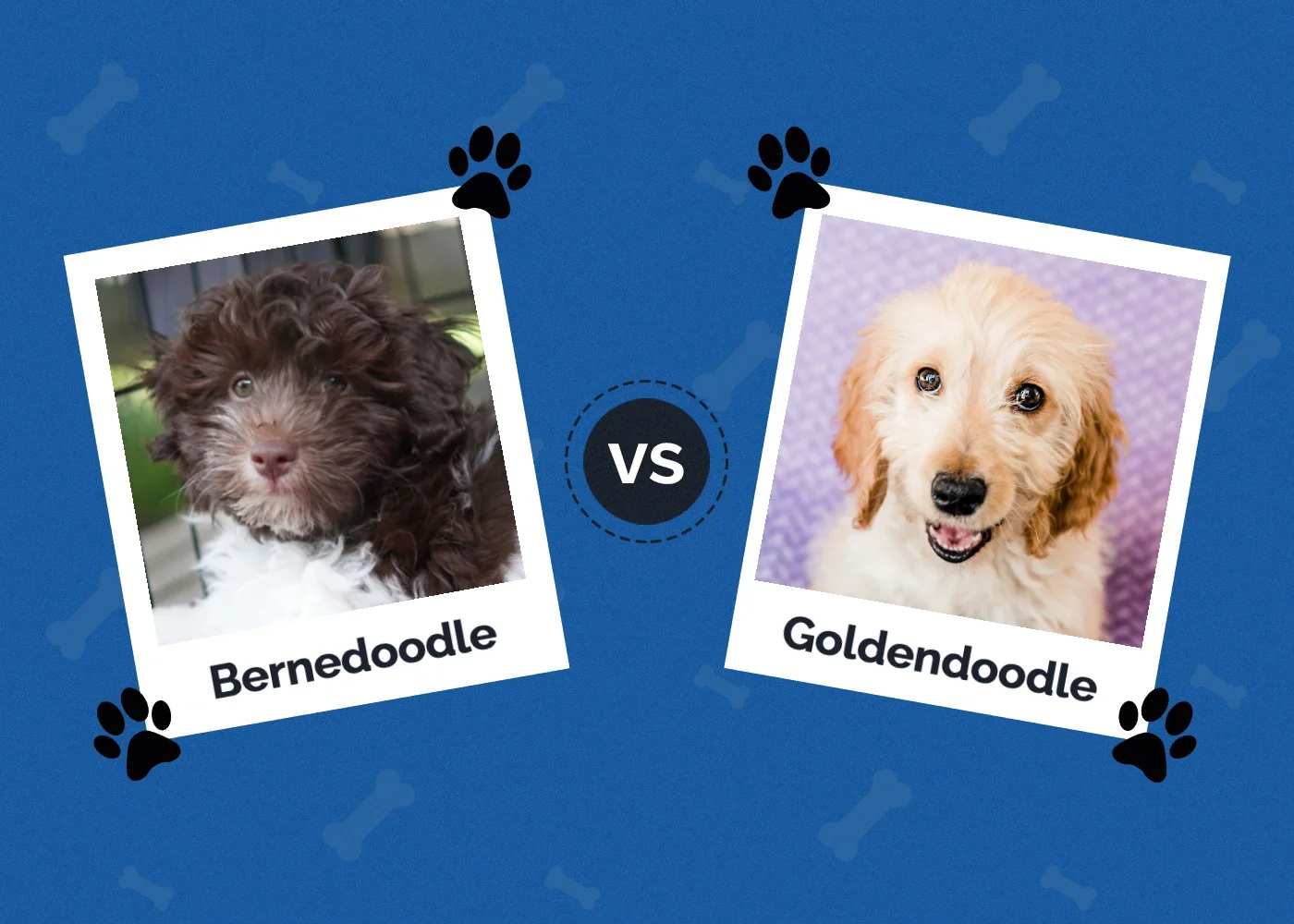How Long Are Great Danes Pregnant? Vet-Approved Pregnancy Duration & Whelping Advice
By Kit Copson
Updated on
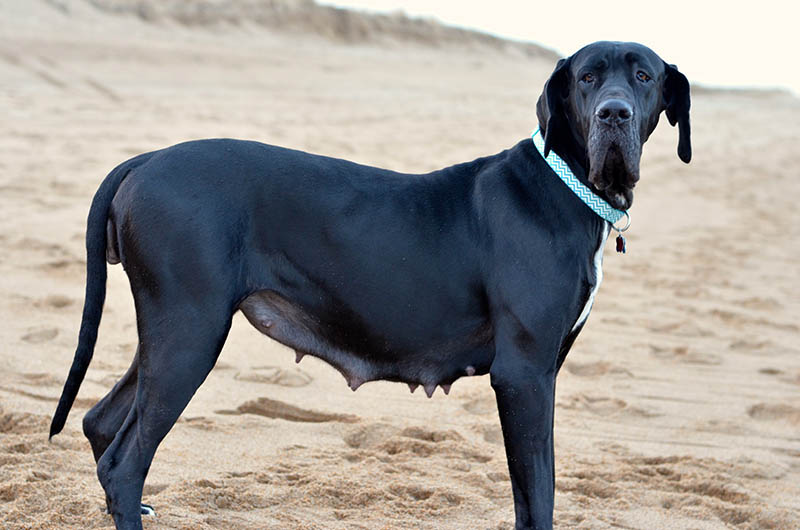
Click to Skip Ahead
If you’re expecting a bunch of mini–Great Danes to pop into your life sometime soon, one of the questions likely to be on your mind is “How long are Great Danes pregnant for?”. Great Danes, like other dog breeds, are typically pregnant for around 63 days from mating, but this may vary slightly.
If the pregnancy lasts more than 63 days, it’s best to check in with your vet to make sure all is as it should be. As mentioned, it’s normal for the time period to vary from 57 to 65 days, but it’s still a good idea to keep your vet in the loop just in case. Read on to find out more about your Great Dane’s reproductive cycle and how to prepare for her labor.
The Canine Reproductive Cycle Explained
It’s common for breeders to track their female dogs’ heat cycles to help ascertain how long the pregnancy will last based on the date of mating.
Dogs typically go into heat (the period when they’re ready to mate) every 6 months or so, but larger dogs are more likely to go into heat less frequently. In the case of Great Danes, it’s possible that they only go into heat once a year. The four different stages of the female dog’s reproductive cycle are proestrus, estrus, diestrus, and anestrus.
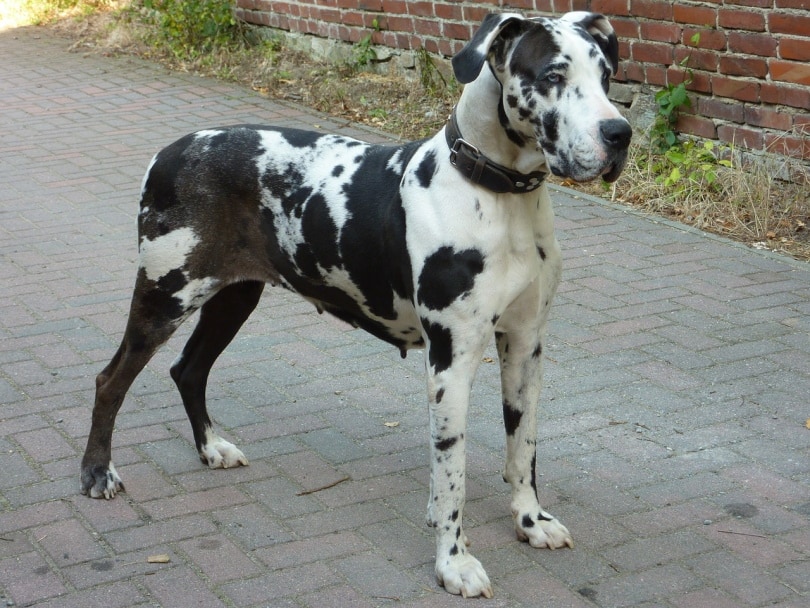
Proestrus
In the proestrus stage, female dogs become attractive to male dogs but will not respond to their efforts to mate. During this stage, the vulva swells and bloody discharge is normal. Proestrus lasts for 9 days on average.
Estrus
This is the stage in which the female dog responds to the male dog’s attempts to mate. It’s also the fertile period of the cycle. The vulva becomes larger and softer in this phase and the bloody discharge lessens, though you may spot lighter-colored discharge. Estrus usually lasts 5-9 days, but can be anywhere from 1-20 days.
Diestrus
In this stage, the female dog stops responding to the male. The vulva is no longer swollen and the red discharge disappears. When you no longer notice any of the physical signs described, your Great Dane’s heat cycle is finished. This stage lasts for approximately 2 months.
Anestrus
Anestrus is the last stage at the end of the reproductive cycle or after giving birth to a litter of puppies, and before the start of another breeding season (proestrus). On average, it lasts for 4-5 months but may be longer in some breeds—particularly large breeds like the Great Dane.
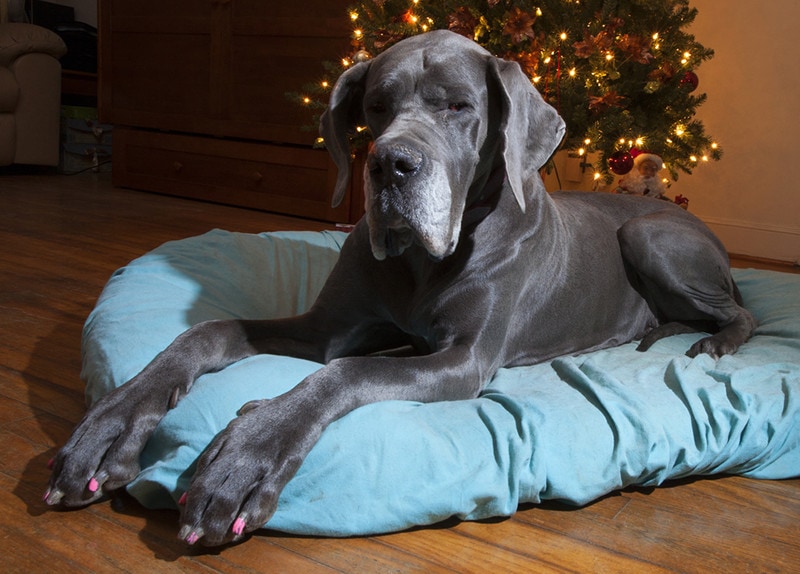
Great Dane Labor Preparation: Whelping Box
It’s a great idea to make a whelping box for your Great Dane—a box that she can comfortably give birth in. A whelping box should have sides tall enough to prevent puppies from falling out but short enough for the mother to comfortably step into the box. The temperature should be approximately 85 degrees Fahrenheit and the box should be in a quiet area.
Many whelping boxes contain rails along the inner sides. This is to help prevent the puppies from getting accidentally crushed against the sides of the box by the mother. The box should also contain towels, blankets, or shredded newspaper (this is easier to clean up). If you use newspaper for the birth, replace it afterward with a blanket or towel.
The Birth: What to Expect
Around 24 hours before labor, your Great Dane’s body temperature will drop to around 98 or 99 degrees Fahrenheit. You can check her temperature frequently when it’s almost time for her to give birth to get an indication of when the labor might actually start.
1. Stage One
During the first 6–12 hours of labor, your Great Dane may become more restless than usual. She may also begin nesting, which could be digging in the whelping box, circling, or trying to pull materials into the whelping box. She will refuse food and may start panting. This stage may last 24 hours.
2. Stage Two
Stage two is when your Great Dane starts to give birth to her puppies. She will start having contractions, which can be either strong or weak when it comes to the first puppy. If strong, she should give birth to her first pup within 20–30 minutes. If weak, it may take 2–4 hours to produce the first puppy.
It’s normal for some time to pass between the delivery of puppies—it may be only a few minutes or as long as 1.5 hours. This is normal as long as the dog is comfortable and not straining. A thin, see-through sac will cover each puppy and the mother will break it to let the puppy breathe. You may need to break the sac yourself if the mother doesn’t do so after a few seconds.
3. Stage Three
Once a puppy has been delivered, the placenta will follow between 5–15 minutes later. In some cases, several placentas may be released at the same time, particularly in cases where puppies are born in quick succession of one another. It’s not uncommon for mother dogs to eat the afterbirth, though it’s not a good idea to let them eat too many as this can cause a stomach upset. The second and third stages happen simultaneously one after the other for each puppy.
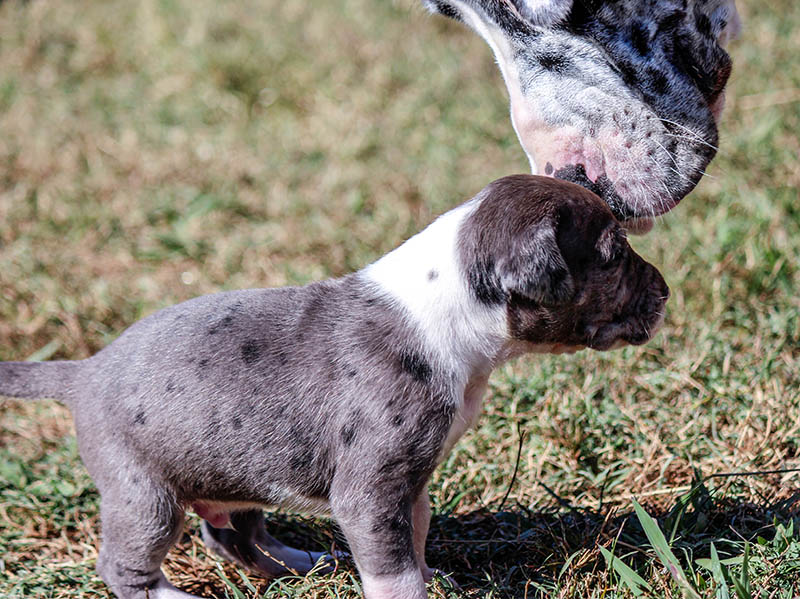
When Should I Contact a Vet?
During the birth, you should contact a vet in the following situations:
- If the labor hasn’t started and it’s been more than 24 hours since the temperature dropped.
- It’s been 65 or more days since your dog was mated but they are not showing signs of labor.
- Your Great Dane has strong contractions and strains for 20 minutes without giving birth to any puppies.
- No puppies are produced after 2 hours of labor, or the dog has weak and sporadic contractions.
- Labor stage two lasts longer than 12 hours.
- The resting phase between puppies lasts longer than 2 hours.
- Excessive amounts of blood.
- Excessive amounts of green or black discharge before the first puppy is born.
- Foul-smelling black/green discharge.
- There seems to be something wrong with the puppies (i.e. unusual appearance).
- The placentas have not been passed after four to six hours.
- A puppy or a fluid filled sac is stuck in the birth canal.
- One or more puppies are stillborn or are not moving or breathing properly.
- Your Great Dane appears to be in a lot of pain.
After the Birth
Once your Great Dane has given birth to all her puppies, she’ll need time to rest and bond with her litter, so her environment needs to be as calm and quiet as possible. She may not want to eat for a while after giving birth, but her appetite should come back within 24 hours. You might need to bring food and water to the whelping box as she might not want to leave her puppies.
Final Thoughts
If you suspect that your Great Dane might be pregnant, the first thing you should do is let your vet know. They will be able to determine if your Great Dane is pregnant, check that she is well, and give you advice. Your vet’s advice and guidance will be invaluable in the coming weeks and months, especially if this is your first time dealing with a pregnant dog.
Featured Image Credit: mkzdillon, Shutterstock



